Journal der Künste 23
Published three times a year (German/English), available free of charge
ISSN (Print EN) 2627-2490
not yet published
The first issue of Journal der Künste under the presidency of Manos Tsangaris and Anh-Linh Ngo focuses on artistic freedom. Texts by Lena Gorelik, Ralf Michaels, Carsten Wurm and others as well as a conversation with Kristóf Kelemen and Gergely Nagy from Hungary address the defence of artistic autonomy from various perspectives. Further contributions provide insights into the genesis of the current exhibitions and the work of the archive.
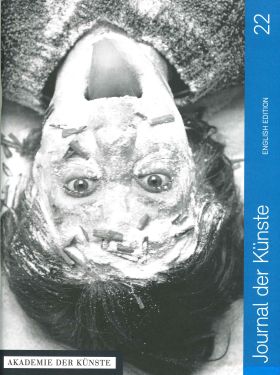
Journal der Künste 22
Published three times a year (German/English), available free of charge
ISSN (Print EN) 2627-2490
The Journal der Künste, issue 22, bids farewell to Jeanine Meerapfel and Kathrin Röggla, the Akademie’s former president and vice-president. It explores the possibility of utopias with Matěj Spurný, Eva von Redecker and Iris ter Schiphorst and the political shift to the right in Germany with Thomas Krüger, Christina Clemm and Holger Bergmann. The 2023 Kollwitz Prize recipient, Sandra Vásquez de la Horra, shows works from her oeuvre; and a Carte blanche designed by Wolfgang Tillmans is featured. The archive includes the stories behind a photomontage by István Szabó and newly acquired drawings by George Grosz, as well as insights into Jürgen Flimm’s director’s workshop.
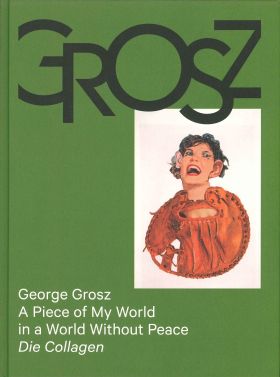
George Grosz: A Piece of My World in a World without Peace. Die Collagen
Birgit Möckel, Rosa von der Schulenburg
Verlag der Buchhandlung Walther und Franz König, Köln 2024
German, 172 pp.,
180 ill.
ISBN 978-3-7533-0531-8
Best.-Nr. 1215
€ 35
Collages made from photo materials taken from print media played a significant role in George Grosz’s works, especially during his early period in Berlin and his final years in the United States. Both female and male stereotypes and their counterparts recur, as do props from everyday life and the consumer world, aptly commenting on the society of their times. The catalogue includes all the works in the exhibition. The texts present the most recent findings on collage in Grosz’s oeuvre, drawing associations to comparable works by Erwin Blumenfeld, Herbert Fiedler and Hannah Höch.
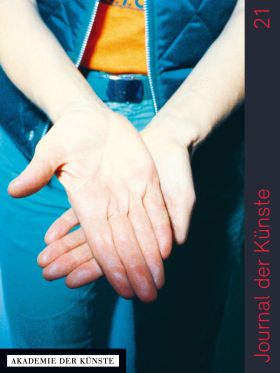
Journal der Künste 21
Published three times a year (German/English), out of print
ISSN (Print EN) 2627-2490
The 21st issue with a new design focuses on questions of sustainability: with texts and photo series on “The Great Repair” by Anh-Linh Ngo, Zara Pfeifer and Mierle Laderman Ukeles, among others, and literary contributions by Ulrike Draesner and Cécile Wajsbrot. Also: conversations with Luc Tuymans and Gundula Schulze Eldowy, short essays by Anna Hetzer, Moshtari Hilal et. al. as well as news from the Archives.
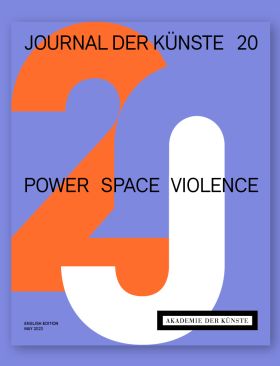
Journal der Künste 20
Published three times a year (German/English), available free of charge
ISSN (Print EN) 2627-2490
Accompanying the current exhibition, the 20th issue focuses on the context of power, space, and violence. Other topics include exile, artistic freedom, the broadcasting crisis, and the role of the arts in the revolutionary process in Iran. With contributions by and with Regina Stephan, Monica Bonvicini, Joanna Piotrowska, Eszter Salamon, Philipp Krüpe , Mina Keshavarz, Tanasgol Sabbagh, Matthias Lilienthal, Meron Mendel, Senthuran Varatharajah, Dominic Graf, Gerhart Baum, Sibylle Hoimann and Annett Gröschner, among others.
To order the printed version: info@adk.de
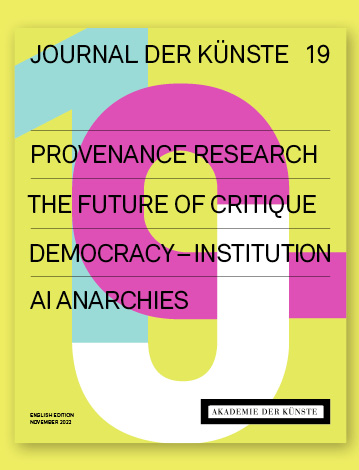
Journal der Künste 19
Published three times a year (German/English), available free of charge
ISSN (Print EN) 2627-2490
The new issue looks at the crisis of public broadcasting as an instrument of democracy, at how art deals with the societal challenges of artificial intelligence, and at the changing role of (art) criticism. Other focal points: the current archive exhibition “Spurensicherung,” photographs by Nan Goldin and Aleš Šteger on artistic freedom in Europe.
To order the print edition: info@adk.de
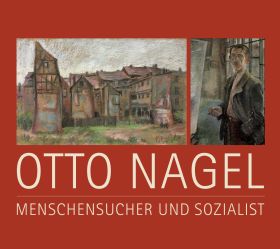
Otto Nagel – Menschensucher und Sozialist
Eckhart J. Gillen im Auftrag der Stadt Eberswalde, in Zusammenarbeit mit der Akademie der Künste, Berlin
Akademie der Künste, Berlin / Stadt Eberswalde, Kulturamt, Eberswalde 2022
German, 116 pp.,
60 ill.
ISBN 978-3-88331-251-4
Best.-Nr. 1207
€ 10
The academic catalogue accompanies the exhibition of paintings and pastels by “Wedding classic” Otto Nagel from the art collection of the Akademie der Künste in the Regionalmuseum Eberswalde. Based on research, especially in the Akademie’s Visual Arts Archive, the authors discover astonishing new facets in the life and work of this outstanding 20th-century realist.
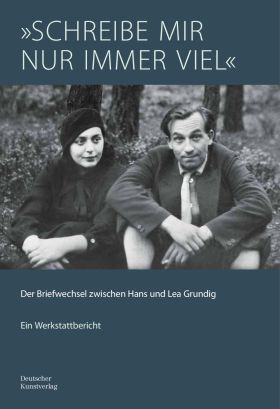
»SCHREIBE MIR NUR IMMER VIEL.« Der Briefwechsel zwischen Hans und Lea Grundig. Ein Werkstattbericht
Im Auftrag der Akademie der Künste, Berlin, und der Rosa Luxemburg Stiftung herausgegeben von Kathleen Krenzlin
Akademie der Künste, Berlin / Deutscher Kunstverlag, Berlin/München 2022
German, 240 pp.,
141 ill.
ISBN 978-3-422-80060-1
Best.-Nr. 1206
€ 24
The letters between painter Hans Grundig (1901–1958) and graphic artist Lea Grundig (1906–1977) deal with a Jewish fate, art and love, but also with imprisonment and flight during the National Socialist era, and finally with the return to a destroyed Dresden. This volume of essays opens up the enormous dimension of the correspondence and forms the prelude to the planned edition of the private correspondence currently in progress.
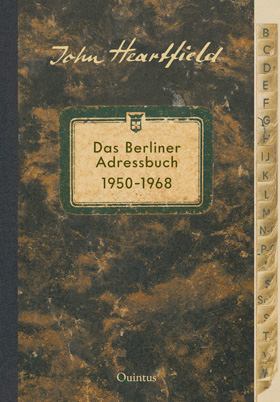
John Heartfield. Das Berliner Adressbuch 1950–1968
Christine Fischer-Defoy and Michael Krejsa on behalf of the Akademie der Künste, Berlin (Eds.), Akademie der Künste, Berlin / Quintus-Verlag 2020
200 pages, 91 illustrations
ISBN 978-3947215-75-1 (German edition)
€ 18
John Heartfield – photomonteur, graphic artist and set designer – used this Berlin address book after he returned from exile in London and settled in the GDR. It is now kept in the archives of the Akademie der Künste. Many entries are accompanied by previously unpublished correspondence and photographs, offering profound commentary. Excerpts from the address book, pertaining to about 120 addressees, are enriched with biographical notes, anecdotes and quotes from letters.
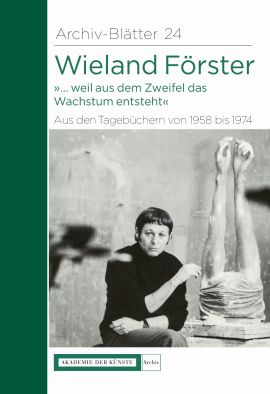
Archiv-Blätter 24
Wieland Förster "... weil aus dem Zweifel das Wachstum entsteht"
Aus den Tagebüchern von 1958 bis 1974
Eva Förster on behalf of the Akademie der Künste (ed.)
Akademie der Künste, Berlin 2018
German, 128 pp.,
20 ill.
ISBN 978-3-88331-227-9
Best.-Nr. 1181
€ 12
Excerpts from the unpublished diaries illuminate the artistic selfunderstanding and personal thoughts of the young Wieland Förster from his time as a master student to membership at the Deutsche Akademie der Künste (GDR). A document on walking with one's head held high in difficult times. The excerpts are supplemented by an interview with the artist, an essay by Hannes Schwenger and a contribution from Michael Krejsa on the Wieland Förster Archive.
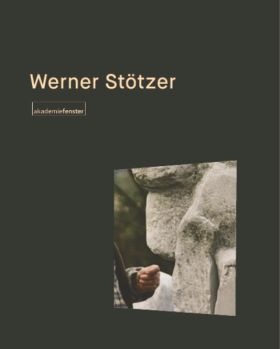
akademiefenster 11
Werner Stötzer
Inge Zimmermann on behalf of the Akademie der Künste (ed.)
Akademie der Künste, Archiv, Berlin 2016
German, 168 pp., 100 ill.
ISBN 978-3-88331-215-6
Best.-Nr. 1174
€ 15,80
Werner Stötzer (1931–2010) was one of the most important sculptors in Germany. At the same time Stötzer was also a concise narrator. The notes, letters and anecdotes published here, mostly for the first time, provide insights into his thinking processes while reflecting a piece of contemporary history. Colleagues, friends and Academy members have written reminiscences and texts for this publication in the akademiefenster series. Drawings, documents and photographs complete the material which the sculptor gave to the Academy archives during his lifetime.